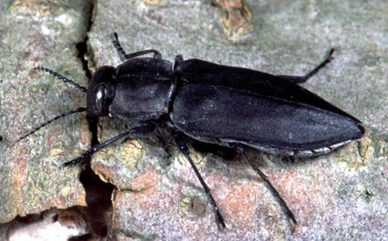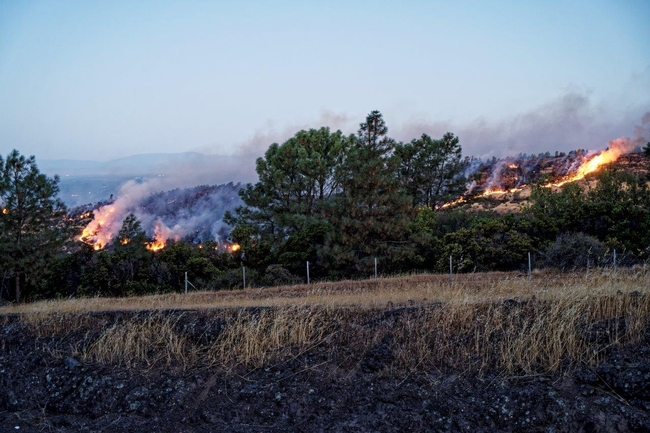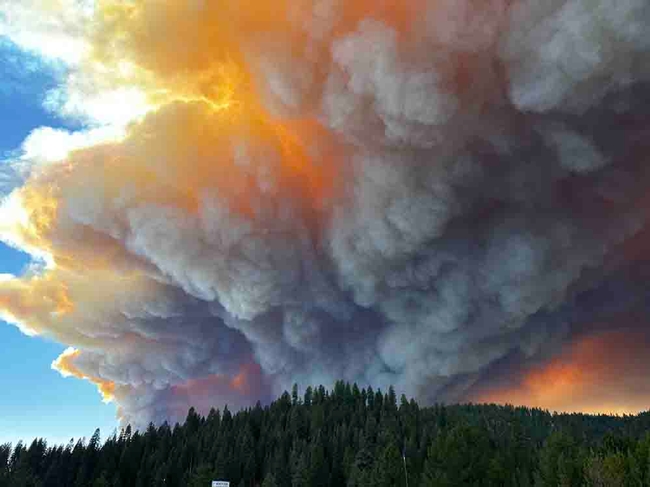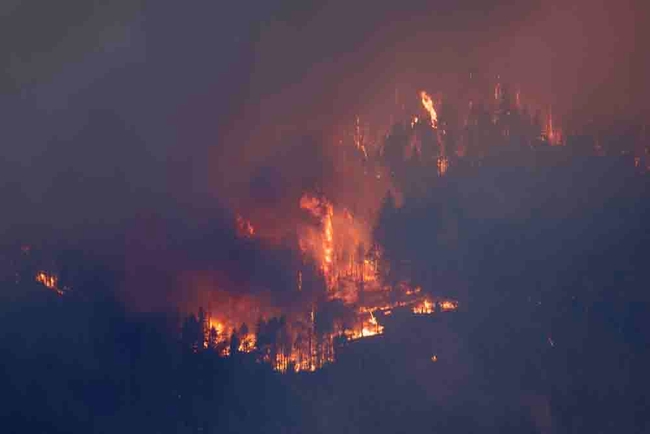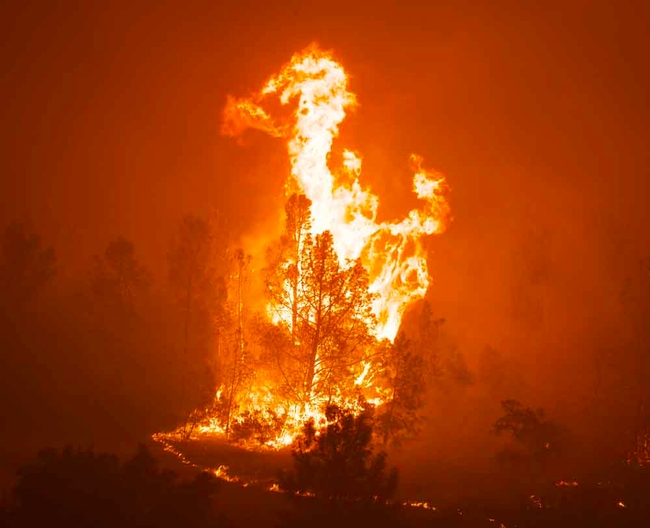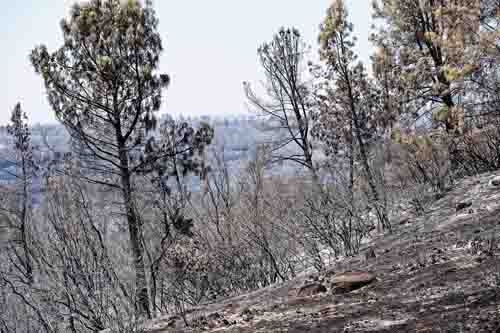Once again, we are experiencing a summer of devastating fires, with repercussions that will last decades or even longer. One of the lesser-known ways in which wildfires wreak havoc is the fact that they create ideal conditions for a particular pest, Melanophila acuminata, the black fire beetle. Also known as fire chasers or fire bugs, these beetles are often the very first to arrive at the scene of a conflagration. By using pheromones, chemical signals, and auditory cues, and monitoring temperature and humidity, Melanophila acuminata will fly over eighty miles to a freshly burned forest. Once there, they meet up, mate, and lay eggs, thriving in places most living creatures avoid.
Melanophila acuminata. AG Prof. Schmitz, Wikipedia Commons (see photo credit link below)
The Park Fire spreading down into the canyon towards Big Chico Creek; black fire beetles could sense the heat. Allen Dixon
Once they have arrived at the scene of a fire, Melanophila acuminata use sucking mouthparts to ingest tree and plant fluids. Chemical cues from burned vegetation determine the optimum time and place for egg laying. Strong social bonding guides their nesting behavior, provides protection from enemies, aids in finding food, and helps them rear their young.
The Park Fire moving towards heavily wooded area. Michael Steinberg
You can bet that black fire beetles are headed towards this burning area. The Park Fire, August 2024. Michael Steinberg
The eggs, laid under the burned bark of trees, primarily conifers, cannot survive the repelling chemical defenses of healthy trees. Indeed, the eggs are sometimes laid in wood that is still smoldering. To ensure the survival of the young, the parent beetle secretes a nutritious meal made from microorganisms, fungus, aphids, scale insects and occasionally animal flesh. Parents groom and guard the offspring to support a healthy brood.
A foothill pine in flames in Cohasset on the first night of the Park Fire. Michael Steinberg
In short, Melanophila acuminata are complex, innovative creatures. But we hope they are not causing more trouble (and pain) for our much-appreciated firefighters.
Park Fire burn area, looking northwest from Highway 32. Ideal environment for the mating of black fire beetles. Allen Dixon
UC Master Gardeners of Butte County are part of the University of California Cooperative Extension (UCCE) system. To learn more about us and our upcoming events, and for help with gardening in our area visit our website. If you have a gardening question or problem, email the Hotline at mgbutte@ucanr.edu or leave a phone message on our Hotline at 530-552-5812. To speak to a Master Gardener about a gardening issue, or to drop by the MG office during Hotline hours, see the most current information on our Ask Us section of our website.
Photo Credit for Melanophila acuminata by AG Prof. Schmitz
